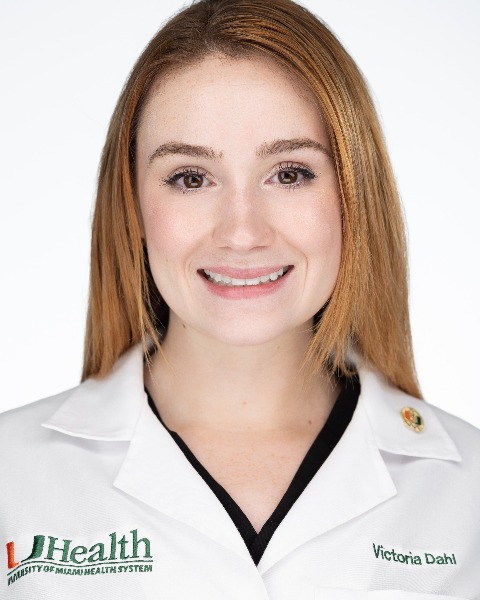Breast
E89: Patient Reported Outcomes for Modified Oncoplastic Lift and Lymphatic Excision and Reconstruction using BREAST Q
- AD
Anshumi Desai, MD
Fellow
University of Miami Miller School of Medicine, Department of Surgery, Division of Surgical Oncology, United States 
Victoria Dahl, BS
Medical Student
University of Miami Miller School of Medicine
Miami, Florida, United States
Natalia Correa, MD (she/her/hers)
Surgical Resident
University of Miami Miller School of Medicine, Department of Surgery, Division of Surgical Oncology
miami, Florida, United States
Natalia Correa, MD (she/her/hers)
Surgical Resident
University of Miami Miller School of Medicine, Department of Surgery, Division of Surgical Oncology
miami, Florida, United States
Natalia Correa, MD (she/her/hers)
Surgical Resident
University of Miami Miller School of Medicine, Department of Surgery, Division of Surgical Oncology
miami, Florida, United States- FR
Francesca Ratovich, MS
Medical Student
University of Miami Miller School of Medicine, United States - RM
Ritika Modi, BS
Medical Student
University of Miami Miller School of Medicine, United States - GD
Gabriel De La Cruz-Ku, MD
Resident
University of Miami Miller School of Medicine, University of Massachusetts Medical School, Massachusetts, United States - AN
Alexis Narvaez-Rojas, MD
Fellow
University of Miami Miller School of Medicine, Department of Surgery, Division of Surgical Oncology, United States - EA
Eli Avisar, MD
Professor
University of Miami Miller School of Medicine, Department of Surgery, Division of Surgical Oncology
Miami, Florida, United States - ZP
Zubin Panthaki, MD
Professor
University of Miami Miller School of Medicine, Department of Surgery, Division of Plastic and Reconstructive Surgery, United States - MM
Mecker Moller, MD
Professor
University of Miami Miller School of Medicine, Department of Surgery, Division of Surgical Oncology, University of Chicago Pritzker School of Medicine, Department of Surgery
Miami, Florida, United States
Author(s)
ePoster Abstract Author(s)
Submitter(s)
Author(s)
Oncoplastic surgery balances the oncological resection of breast cancer while maximizing cosmetic outcomes. The Modified Oncoplastic Lift and Lymphatic Excision and Reconstruction technique is a simplified procedure that employs standard incisions, multi-layered internal stitching, and subsequent advancement flaps and facilitates lymph node extraction through the initial incision. This technique is easily learned and minimizes large incisions. We present patient-reported satisfaction and clinical outcomes.
Methods:
Patients who underwent this technique with and without sentinel lymph node biopsy (SLNB) and with and without radiation were included. Demographics, tumor type, and treatment outcomes along with a BREAST-Q v2.0 [Breast Conservation Therapy (postoperative)] survey were collected. We evaluated the satisfaction with breast appearance (higher score indicates higher satisfaction) and adverse effects of radiation breasts (higher score indicates lower satisfaction). The primary outcome was to co-relate the BREAST-Q score with the extent of reconstruction. Secondary outcomes included evaluating the effect on margin status and recurrence.
Results:
We had 190 patients, 152 patients met the inclusion criteria and 105(59%) patients answered the BREAST Q. The mean age was 58.6 years [SD 10.7] and mean BMI was 32.68 kg/m2 [SD 10.42]. Table 1 shows demographic and treatment characteristics. The mean size of tumor resected in our study population was 60 cm2. A total of 105 patients had documented extent of reconstruction, including the following three cohorts: < 10 cm2 (n=72, 68.5 %), 10-30 cm2 22.8 % (n= 24), and >30 cm28.5% (n=9). More than half of the patients (55.4%) had successful sentinel lymph node retrieval through the same incision as the lumpectomy incision. The mean recorded BREAST Q score in our population was 88 with a median of 80 (range 20-100). The mean score was above the median in cohorts with < 10 cm3 and 10-30 cm3, while it was 79 in >30 cm3 of reconstruction. There was no statistically significant difference among the scores ( Table 2). A total of 81 patients received radiation. Clinical seroma formation was 0%, re-excision 5% (n=8), and local recurrence 3.23% (n=5).
Conclusions:
This simplified technique shows high patient-reported outcomes for all patients including those with greater extent of reconstruction. It had recurrence rates lower than standard for lumpectomies without increasing re-excision needs while having a significant impact in decreasing seroma formation. This technique can be used for larger tumors with excellent cosmetic results.
Learning Objectives:
- describe the Modified Oncoplastic Lift and Lymphatic Excision and Reconstruction technique
- understand the relation found of the BREAST-Q score with the extent of reconstruction
- understand the outcomes of the study and be able to apply it to your own practice
